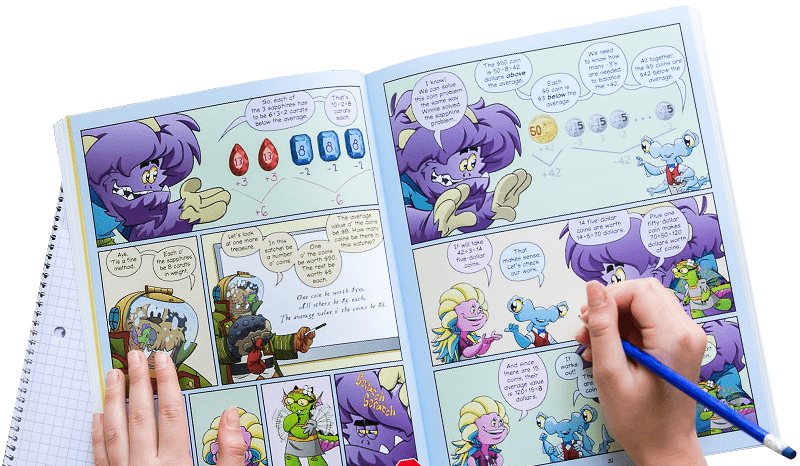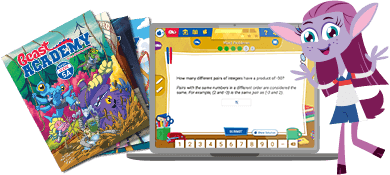Memory: Matching
Practice number recognition to find a matching pair. Whoever finds the most pairs wins.
Instructions
This game uses the deck you made in our Number Deck activity. (Or see Variations if you don't have a Number Deck.) Start with cards 1-6 in two suits. The youngest players might benefit most from playing with the Numerals and Dots.

Shuffle the cards and lay them out face down.

Take turns. On your turn, flip over any two cards. If they match, keep them and go again. Otherwise your turn is over.

Play until all the matches have been found. Whoever has the most pairs wins!
Very young players of this game will benefit just from recognizing the match between the suits, and counting their cards at the end. Also practice skip-counting by 2 as you count each pair. (Skip-counting is counting by 2's or 3's or some other number, so skip-counting by 2's, for example, means counting 2, 4, 6, 8, 10, etc.)
Don't forget: it's Beast Academy Playground, not Beast Academy Study Hall. Change the rules, be silly, make mistakes, and try again. The Variations and Learning Notes are here for you if you want to dive deeper, but not all of them apply to learners of every age. The most important thing is to have fun.
What do you think of this activity?
We're always looking to improve. Submit your feedback to us below.
- Number Deck or other playing cards
- recognizing numbers
- spatial reasoning
- skip-counting
- spatial reasoning
- pairs that add to ten
- K.CC.A.3
- K.CC.B.4
- K.CC.B.5
- K.CC.C.6
- K.OA.A.4

Ready to level up?
Keep problem solving with Beast Academy’s full math curriculum for students ages 6–13. Check out our captivating comic book series and immersive online platform.
LEARN MOREBring problem-solving to your classroom
Keep your entire class engaged with a full book and online math curriculum, for students ages 6–13. 98% of teachers say they’re satisfied with Beast Academy.
LEARN MORE



Ready to level up?
Keep problem solving with Beast Academy’s full math curriculum for students ages 6–13. Check out our captivating comic book series and immersive online platform.
LEARN MOREBring problem-solving to your classroom
Keep your entire class engaged with a full book and online math curriculum, for students ages 6–13. 98% of teachers say they’re satisfied with Beast Academy.
LEARN MORE
Sign up to be notified when new videos are released.















































